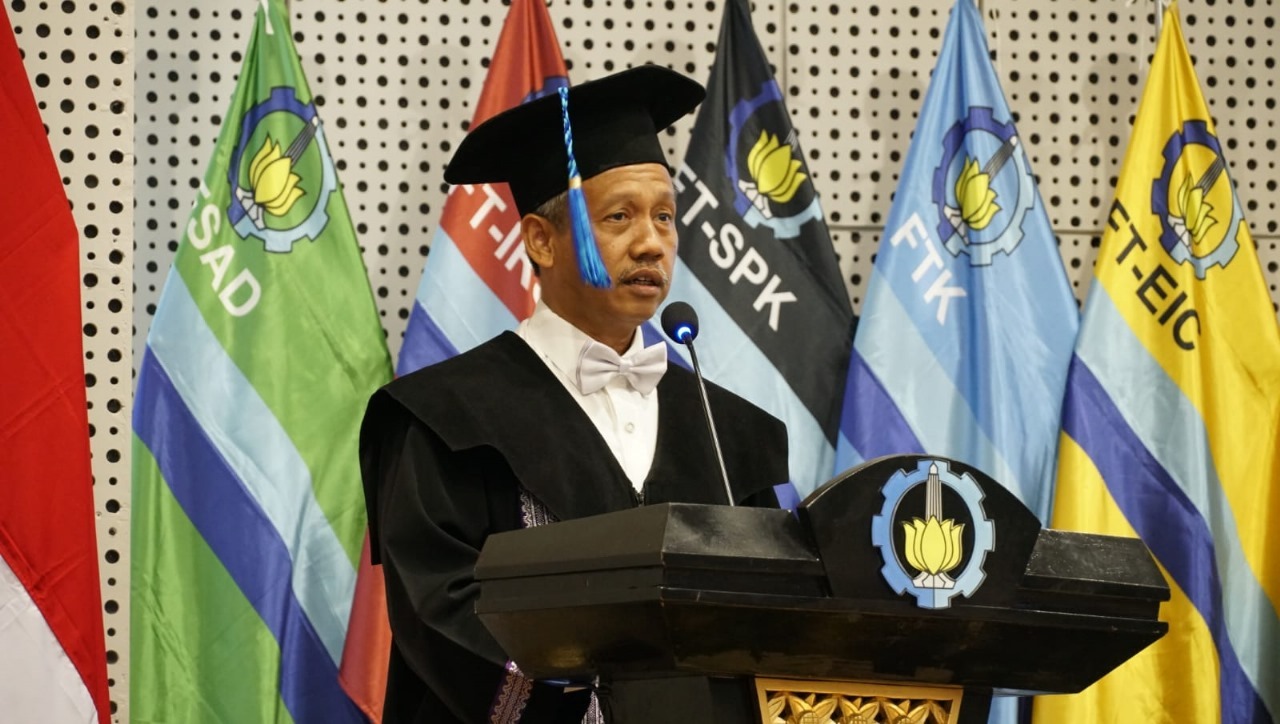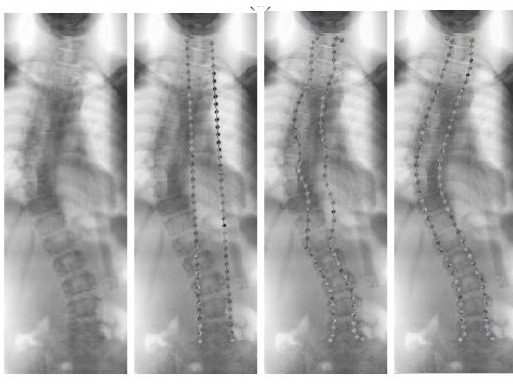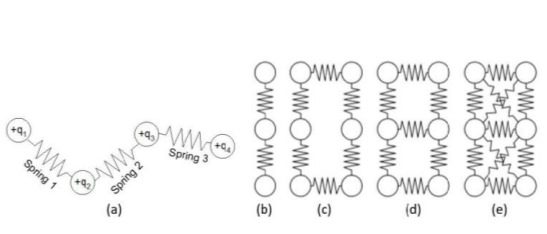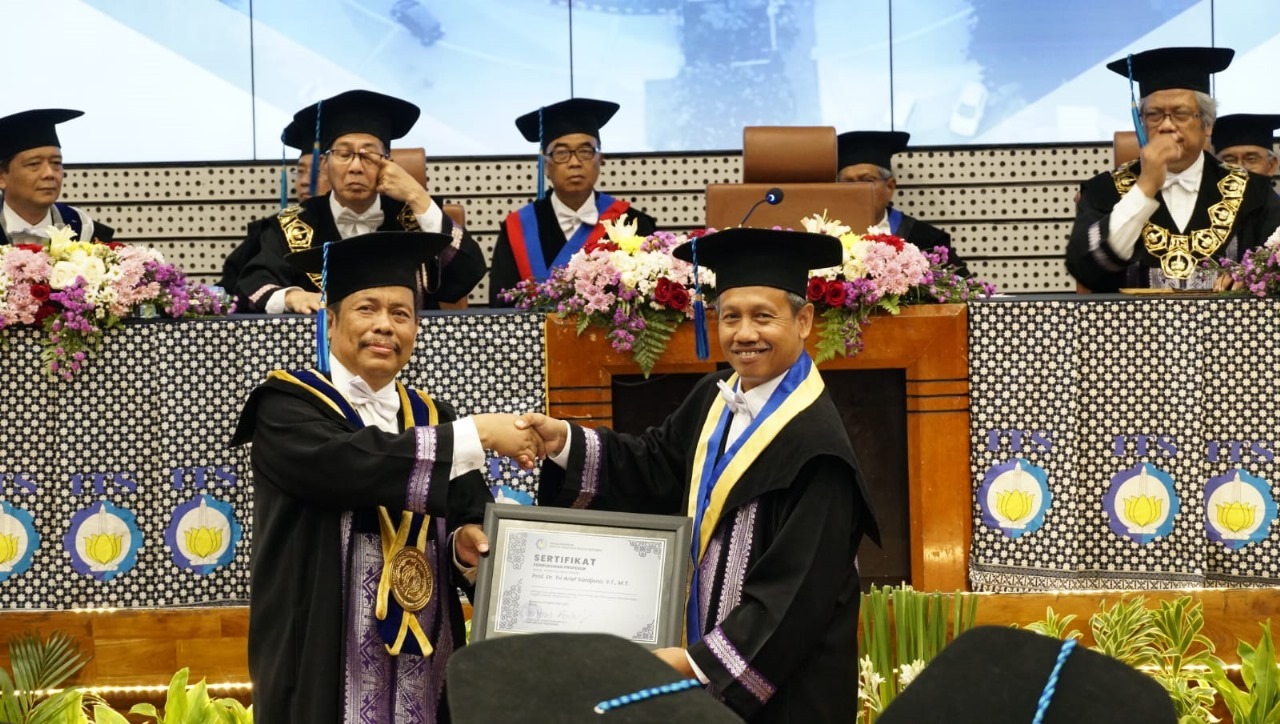ITS Professor Develops Biomedical Image Segmentation Method

Prof Dr Tri Arief Sardjono ST MT when delivering his scientific oration entitled The Important Role of Biomedical Image Analysis and Processing in the Medical Field
ITS Campus, ITS News — Accurate biomedical images are a vital aspect of the medical world. This is the background for the 167th Professor of the Institut Teknologi Sepuluh Nopember (ITS), Prof Dr Tri Arief Sardjono ST MT to study the use of the Spring Charged Particles Model (SCPM) in image segmentation and shape restoration.
Tri explained that the SCPM method is included in the deformable model. This model has the ability to follow the contour of a desired object, determine the boundaries of the region of interest (ROI), and improve shape recovery. Plus a good level of flexibility without the need for high computing. However, SCPM will have difficulty if applied to low-quality and messy images.
To overcome this deficiency, this ITS Electrical Engineering Bachelor’s alumnus said that SCPM combines positively charged particles with springs. These particles will move towards the contour of the negatively charged object produced by the biomedical image. “This combination of springs will prevent the particles from moving away from each other and keep them at the appropriate distance without reducing their flexibility,” explained Tri.

SCPM in determining the spine of scoliosis patients from the beginning (left) to perfect particles following the spine (right)
Furthermore, SCPM itself has been tested using a simple curve, showing the given shape even though there is plenty of noise. Apart from that, this method has also been tested on open and closed curves with good results. Even in closed curve testing, SCPM’s capabilities show that SCPM is superior to the Charge Fluid Model and Active Contour.
With the perfection of his trials, this man born in Surabaya explained that this method had been applied in the medical field, namely detecting spinal curvature. In this test, positively charged particles appear to move following the shape of the used spine image of a scoliosis patient. The particles create segmentation in spinal image and make it easier for medical personnel to make diagnoses.

The SCPM particle arrangement is a combination of positively charged particles connected by a spring
Furthermore, this professor from the Department of Biomedical Engineering, Faculty of Intelligent Electrical and Informatics Technology (FTEIC) said that in the future SCPM will not only be limited to bone images. However, it can also segment and restore various other organs. “SCPM also supports various types of images, whether using CT-Scan, X-ray, Ultrasound, etc.,” he added.
Through this method, medical diagnoses will be faster and more accurate. The segmentation shown by SCPM will help medical parties to determine the focus point of their analysis. Apart from that, SCPM’s ability to improve image shape is also very useful for better identifying biomedical image results.

Chair of the ITS Professor Council Prof Dr Ir Imam Robandi MT (left) when giving a certificate after inaugurating Prof Dr Tri Arief Sardjono ST MT (right) as ITS’s 167th Professor
Finally, this alumnus of the Doctoral Degree in Biomedical Engineering at the University of Groningen revealed that it is hoped that the SCPM method will be able to help various other fields, such as planning and monitoring therapy, understanding anatomy and physiology, patient safety and clinical practice. “In the future, SCPM will not only focus on two dimensions but can be developed into the three-dimensional realm,” he concluded. (ITS Public Relations)
Reporter: Muhammad Fadhil Alfaruqi
Translator: Hanifah Inayah
Related News
-
The Indonesian Minister of Creative Economy Visits GRIT ITS to Review Creative Economy Development
ITS Campus, ITS News — The Sepuluh Nopember Institute of Technology (ITS) continues to demonstrate its commitment to bridging research and innovation,
September 30, 2023 11:09 -
AHY Ignites ITS Freshmen’s Spirit to Achieve Golden Indonesia 2045
ITS Campus, ITS News — Greeted with thunderous enthusiasm, the Coordinating Minister for Infrastructure and Regional Development of the Republic
September 30, 2023 11:09 -
Starting the New Academic Year, ITS Inaugurates 6,993 New Students
ITS Campus, ITS News — Kicking off the 2025/2026 academic year, the Sepuluh Nopember Institute of Technology (ITS) officially inaugurated 6,993 new undergraduate
September 30, 2023 11:09 -
Fira, a frequent student at ITS, is the youngest at 15 years old
ITS Campus, ITS News — At the 2025 New Student Inauguration (PMB) ceremony at the Sepuluh Nopember Institute of Technology (ITS),
September 30, 2023 11:09
